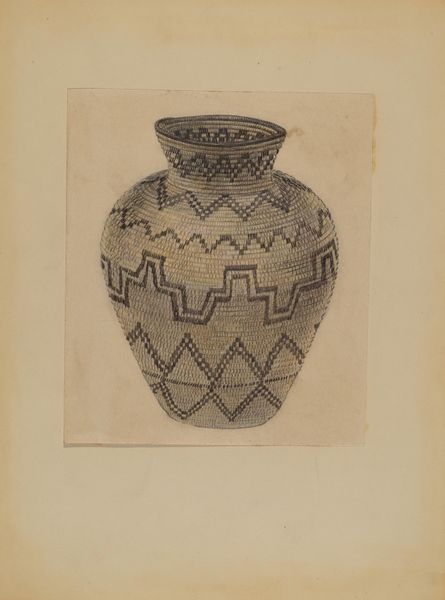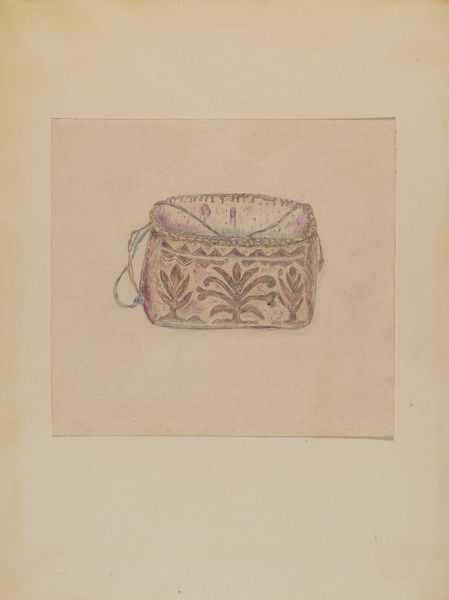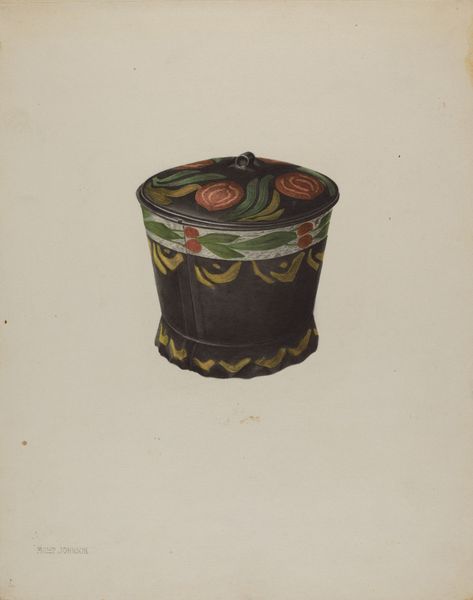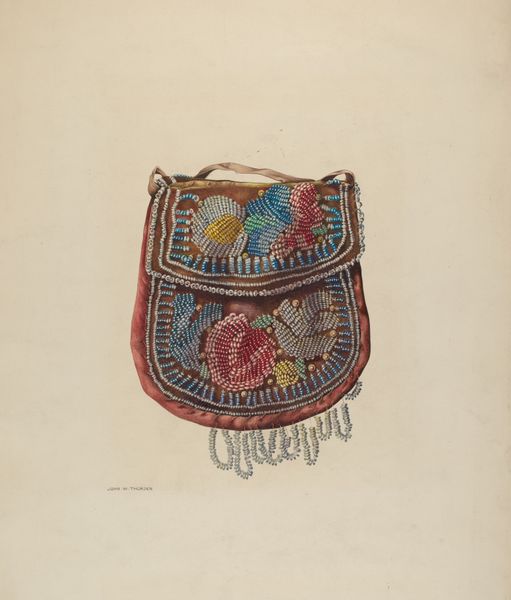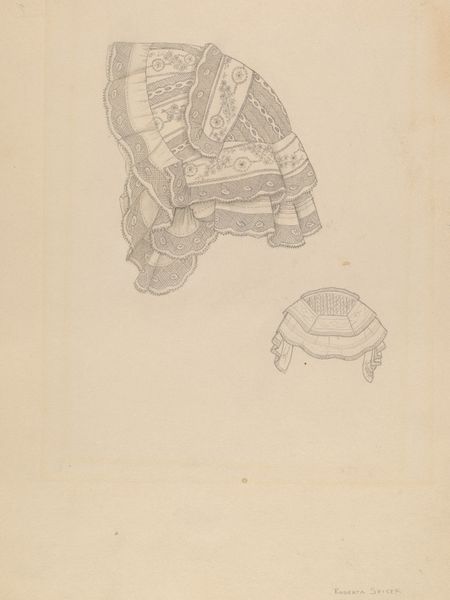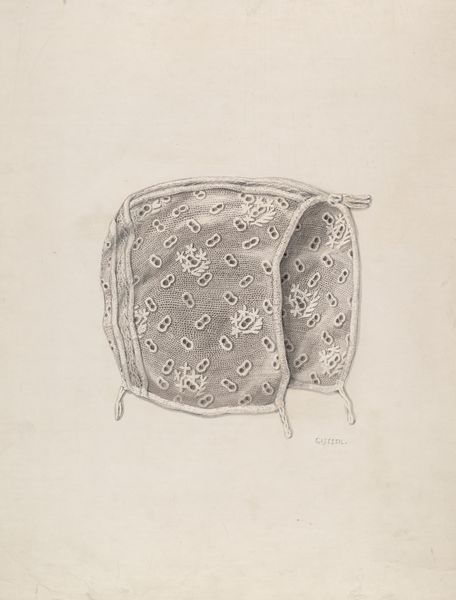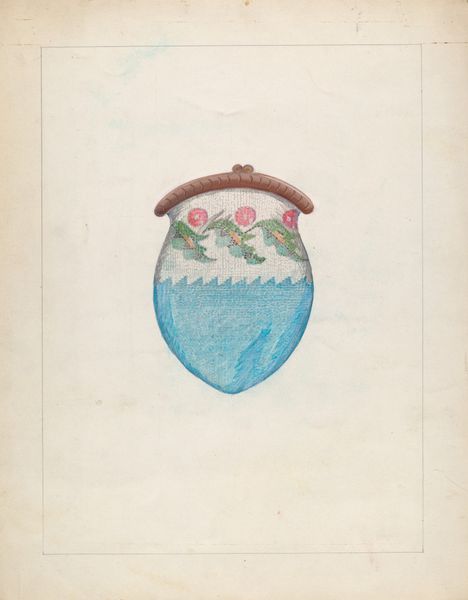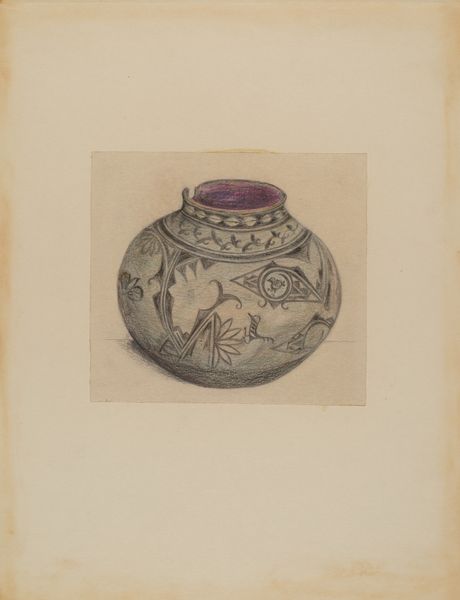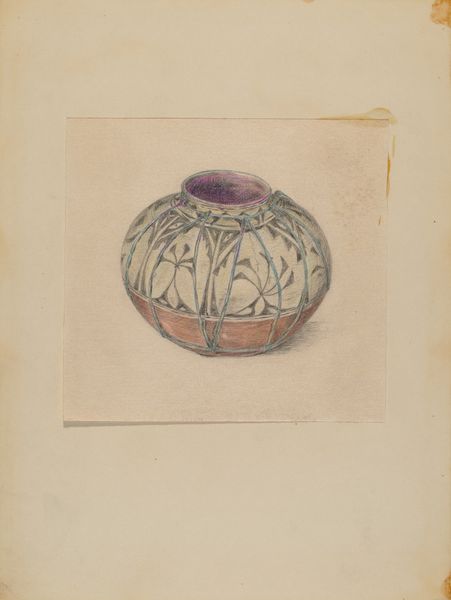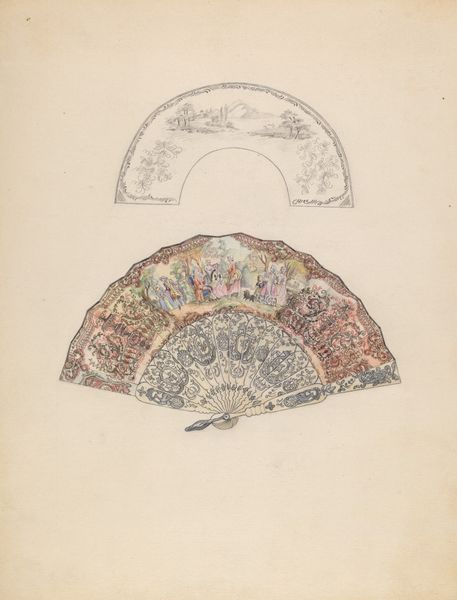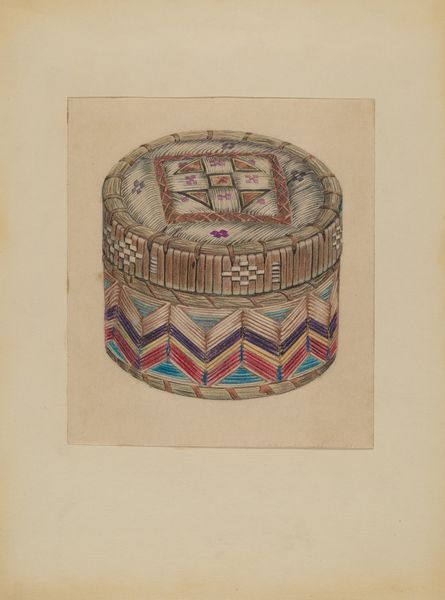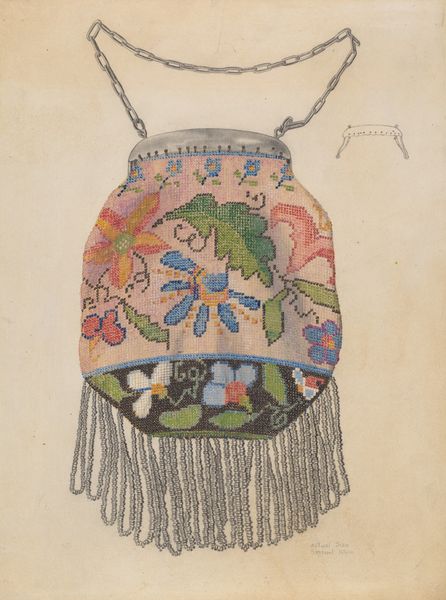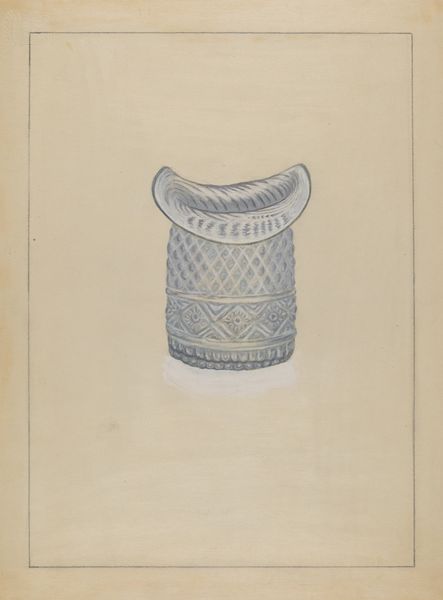
drawing, coloured-pencil
#
drawing
#
coloured-pencil
#
water colours
#
coloured pencil
#
geometric
Dimensions: overall: 17.4 x 14.5 cm (6 7/8 x 5 11/16 in.)
Copyright: National Gallery of Art: CC0 1.0
Curator: Looking at Melita Hofmann's "Box," created around 1935, one immediately notices a certain... stillness. The colored pencils bring out a delicate texture in the rendering of this geometric container. Editor: Yes, it is a static object captured, but the making involved so many tiny coloured pencil marks. There is a certain humbleness to coloured pencil on paper that is refreshing given its laborious origins. Curator: That labor echoes other forms of work, doesn't it? A box, a container – what are we holding, keeping, or hiding? Hofmann lived through some deeply troubled times in the early part of the 20th century; one can't help but consider the weight of such questions for those communities and individuals. Were there things needed to be kept out of sight? Editor: Indeed. Thinking materially, though, it prompts us to consider what such boxes were originally designed to contain. Often craft traditions served as a way of both economic independence and as an act of material ingenuity using whatever might have been at hand. Curator: Absolutely. And we see in the pattern – those tightly woven chevrons that clad the cylindrical body—a language of containment and construction. I wonder what role gender played? Were women often tasked with such craft, and how did that empower or restrict? Did these objects carry implicit political meaning? Editor: I'd be interested in the practical side, also, though, in looking at the materiality— where did those colored pencils come from and what natural pigments were used. The repetition in the zigzag reminds me of textile patterns. What role do craft and the labour in such an artwork have in either reinforcing or rejecting traditional notions of what is perceived to be “art." Curator: These sorts of object drawings could act as commentary. Thinking about societal frameworks, such drawings might underscore themes of holding close to your possessions—a comment on wealth and poverty within communities. They might also represent how communities view access to goods. Editor: Thinking of this work now, the repetitive markings across a familiar object—box shape, geometric surface design—make me realize that there are both historical and aesthetic concerns woven in here. Curator: I concur—bringing these diverse threads into the fold offers a more grounded view into what may be at hand here.
Comments
No comments
Be the first to comment and join the conversation on the ultimate creative platform.
